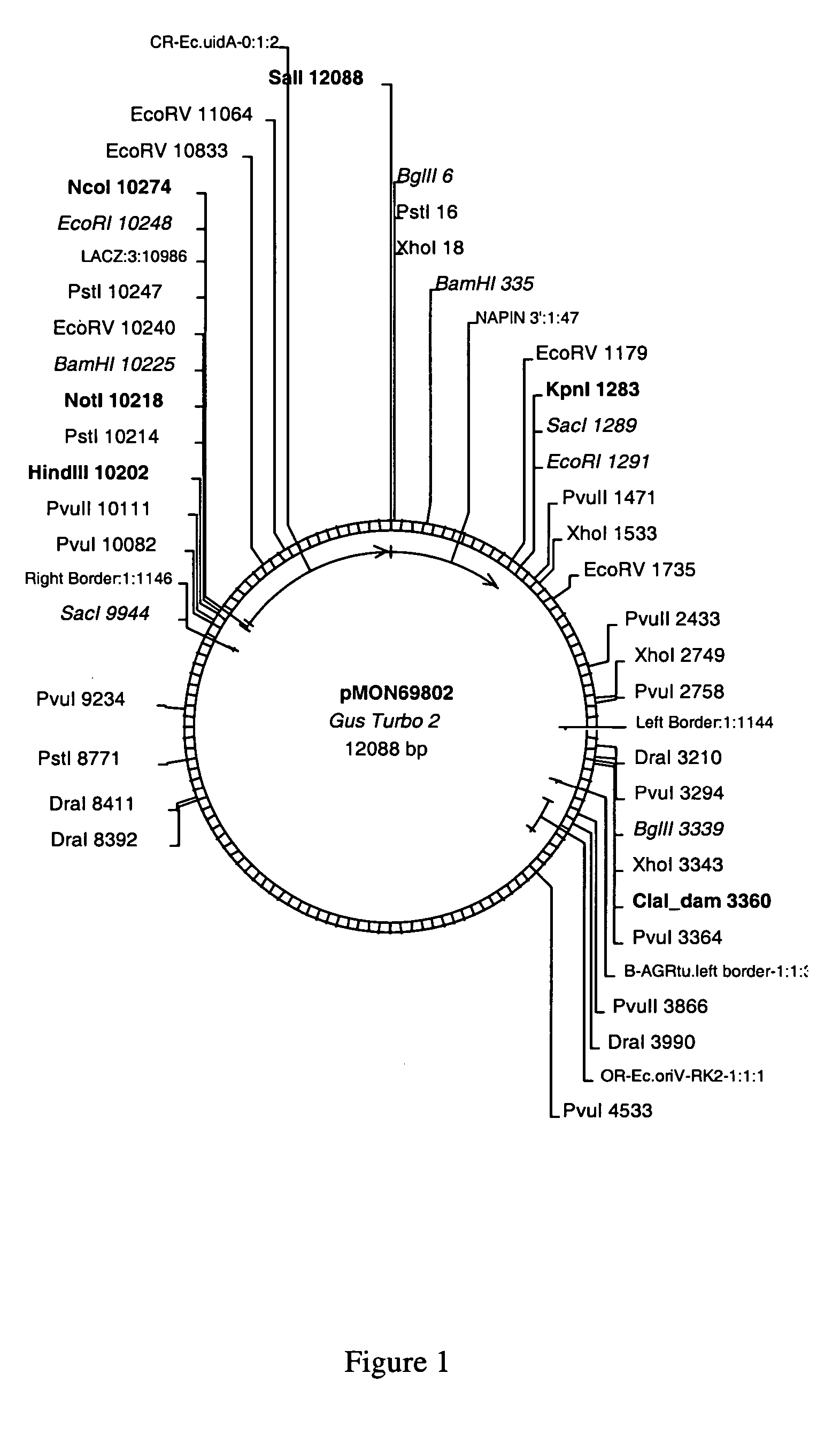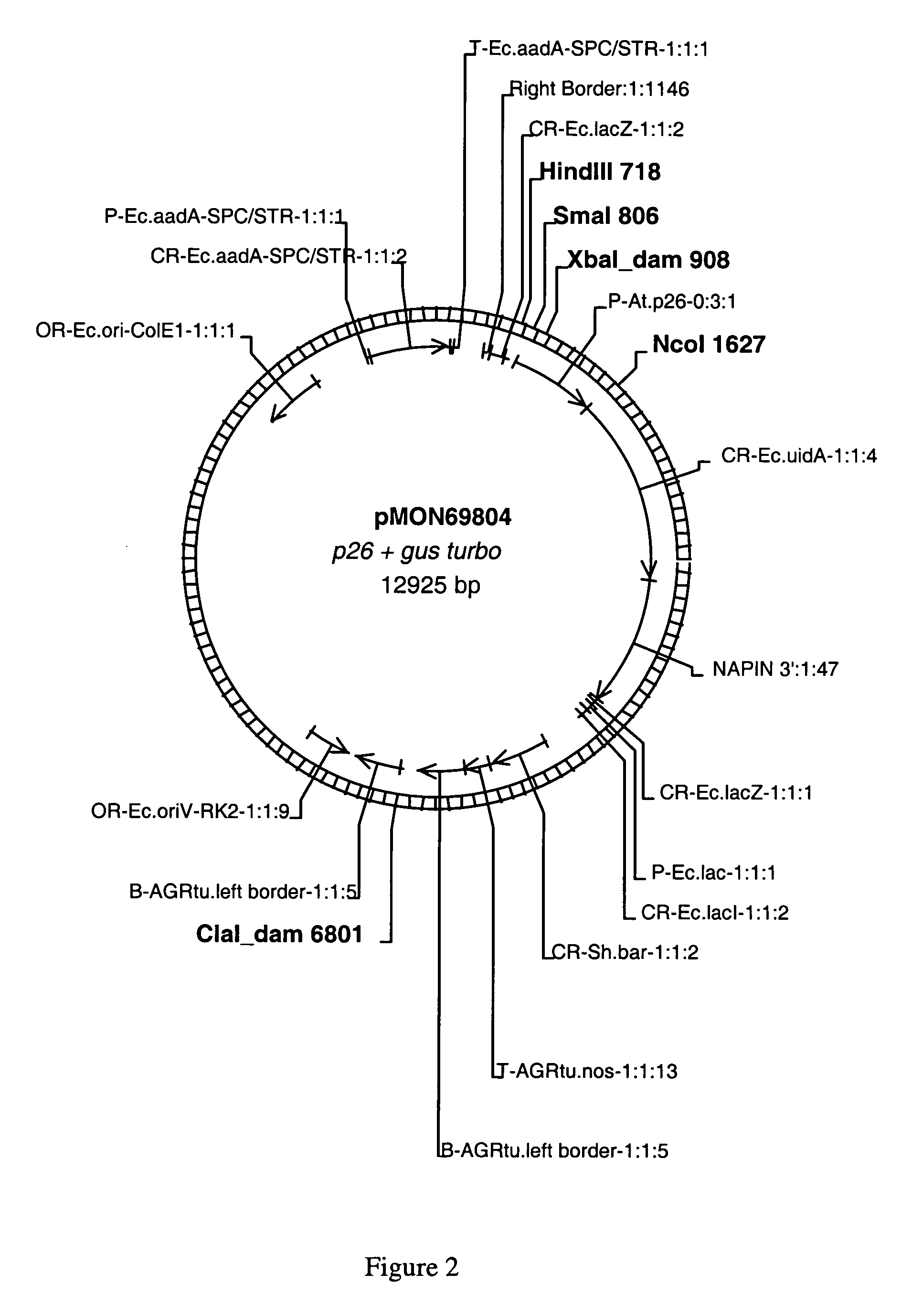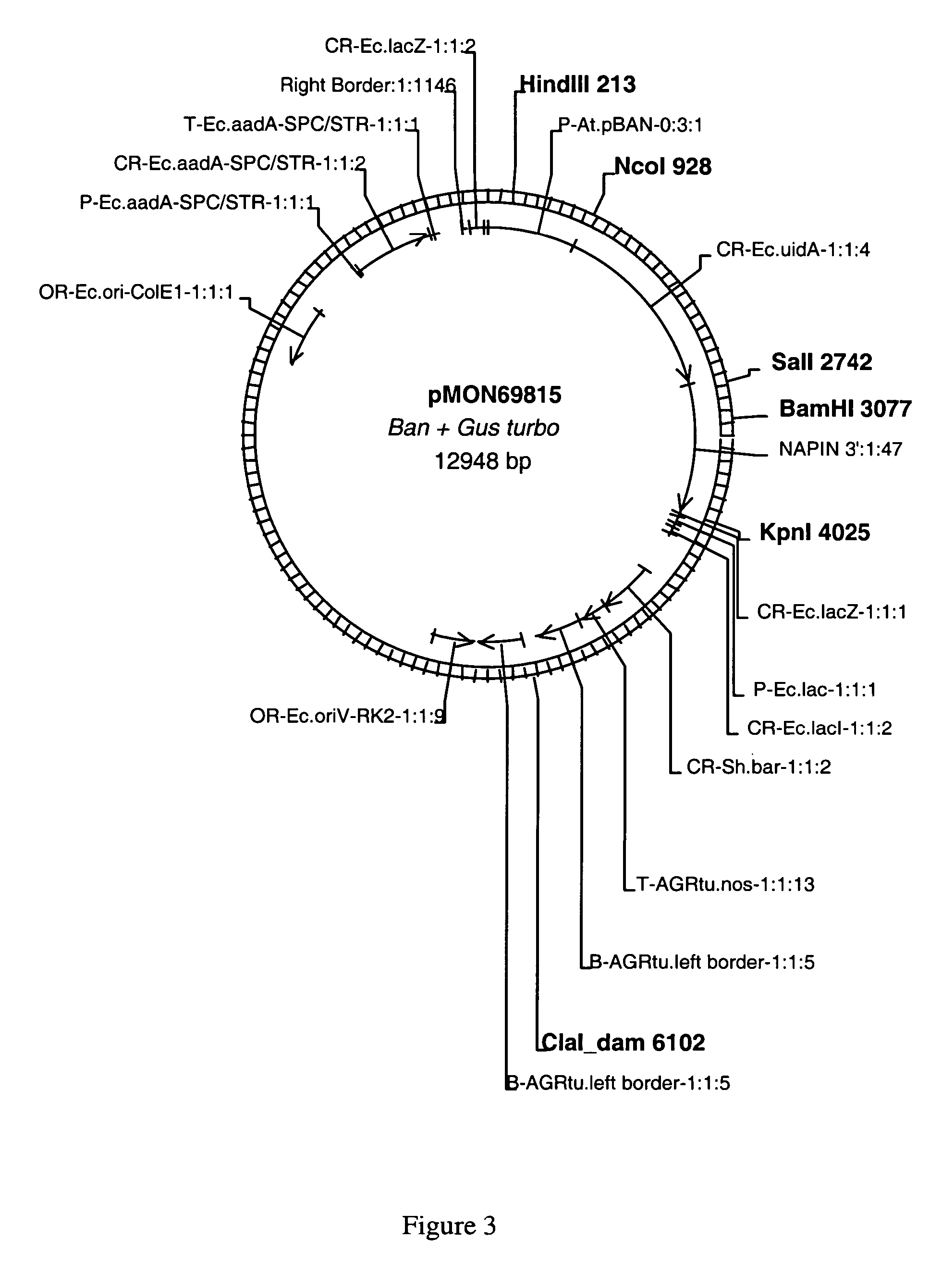Plant promoters for use in early seed development
a plant promoter and seed technology, applied in the field of early seed development gene expression, can solve problems such as adverse effects on yield
- Summary
- Abstract
- Description
- Claims
- Application Information
AI Technical Summary
Benefits of technology
Problems solved by technology
Method used
Image
Examples
example 1
[0089]This example sets forth the isolation and characterization of the nucleic acid sequences for the plant promoters p26, p63, p63tr and pBAN.
p26
[0090]A cDNA clone, designated clone 26, was identified from Arabidopsis thaliana using a cDNA-AFLP procedure. Briefly, SMART cDNA libraries were prepared from mRNA isolated from Arabidopsis according to manufacturer's instructions (Clontech Laboratories, Palo Alto, Calif.). The MRNA was isolated from open flowers (inflorescence), stem, whole seedling, and developing seed harvested at 4, 7, 10, 13, or 18 days after flowering (DAF). Five hundred micrograms of amplified SMART cDNA was used for AFLP analysis using the Gibco-BRL small genome AFLP II Kit (Invitrogen, Carlsbad, Calif.) according to manufacturer's instructions. The resulting bands were visualized after electrophoresis through 6% acrylamide / 8M Urea sequencing gels. A single band, designated band 26, visible only in the lane derived from cDNA from 4 DAF developing seed tissue, was...
example 2
[0112]This example describes the construction of the vectors used for Arabidopsis transformation.
pMON69802
[0113]An 1861 base pair (bp) fragment containing the E. coli uidA gene (GUS) was removed from the donor plasmid pCGN10906 by digestion with EcoRI. The fragment was isolated from an agarose gel using the QiaGel Purification kit (Qiagen) according to the manufacturer's instructions. The purified DNA was eluted from the column using 30 μl of Buffer EB (10 mM Tris-Cl pH 8.5). New restriction endonuclease sites were added to the E. coli uidA gene using primers:
[0114]
Gus 5′5′-AGGCGGCGCCTAAACCATGGTCCGTCCTGTAGAAACCCC-3′(SEQ ID NO: 14)and Gus 3′5′-AGTCGACTCATTGTTTGCCTCCCTGCTGCGGTTTTTCAC-3′.(SEQ ID NO: 15)
[0115]The purified fragment (0.5 μl) was used as the template for the following PCR amplification. Thirty nanomoles each of primers Gus 5′ (SEQ ID NO: 14) and GUS 3′ (SEQ ID NO: 15), 10 micromoles each of dATP, dCTP, dGTP, and TTP, 2.5 units of AmpliTaq Gold (PE Applied Biosystems) in 1×...
example 3
[0120]This example describes the transformation and subsequent regeneration of transgenic Arabidopsis plants expressing a heterologous gene of interest.
[0121]Arabidopsis plants were grown by sowing seeds onto 4 inch pots containing reverse osmosis water (ROW) saturated MetroMix 200 (The Scotts Company, Columbus, Ohio). The plants were vernalized by placing the pots in a covered flat, in a growth chamber at 4-7° C., 8 hours light / day for 4-7 days. The flats were transferred to a growth chamber at 22° C., 55% relative humidity, and 16 hours light / day at an average intensity of 160-200 μEinstein / s / m2. The cover was lifted and slid back 1 inch after germination, and then was removed when the true leaves had formed. The plants were bottom watered, as needed, with ROW until 2-3 weeks after germination. Plants were then bottom watered, as needed, with Plantex 15-15-18 solution (Plantex Corporation Ottawa, Canada) at 50 ppm N2. Pots were thinned so that 1 plant remained per pot at 2-3 weeks...
PUM
| Property | Measurement | Unit |
|---|---|---|
| Content | aaaaa | aaaaa |
Abstract
Description
Claims
Application Information
 Login to View More
Login to View More - R&D
- Intellectual Property
- Life Sciences
- Materials
- Tech Scout
- Unparalleled Data Quality
- Higher Quality Content
- 60% Fewer Hallucinations
Browse by: Latest US Patents, China's latest patents, Technical Efficacy Thesaurus, Application Domain, Technology Topic, Popular Technical Reports.
© 2025 PatSnap. All rights reserved.Legal|Privacy policy|Modern Slavery Act Transparency Statement|Sitemap|About US| Contact US: help@patsnap.com



